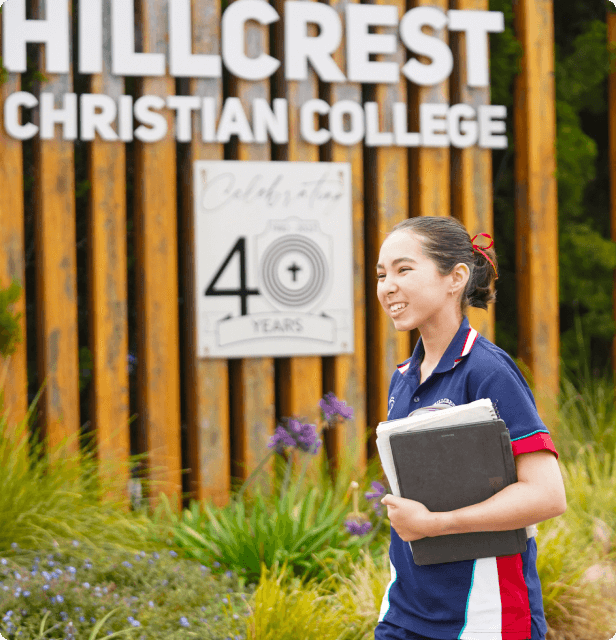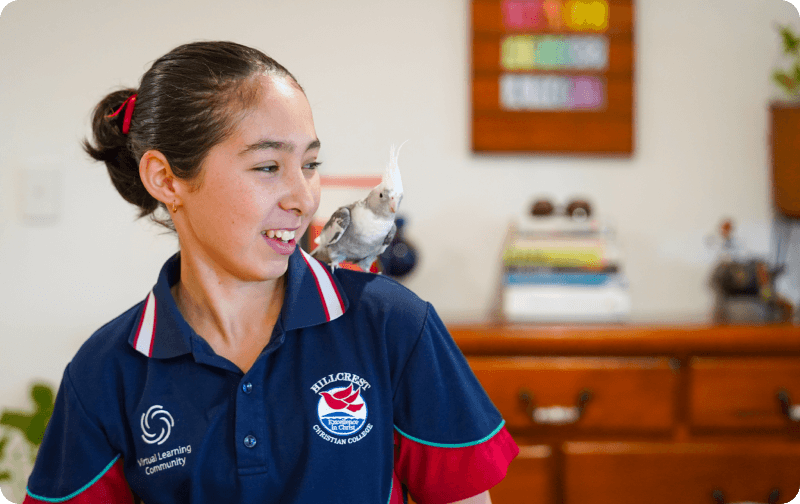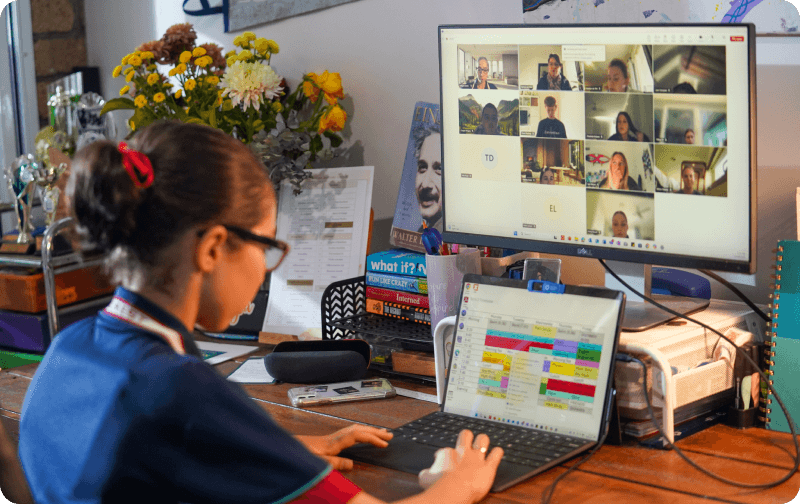Reimagining Assessment: Confidence First, Grades Second

On this page
Share this
How one teacher tailors French assessment to support wellbeing and interaction
Nadine Hammill is a French teacher with the Virtual Learning Community (VLC) at Hillcrest Christian College on Queensland’s Gold Coast. Working remotely from the Sunshine Coast, she teaches Prep to Year 6 students who study from home, due to medical needs, family choice, or geographic isolation.
Nadine joined Hillcrest two years ago and was one of the first teachers to work remotely in a full-time capacity. She now supports around 70–80 students across the primary years, tailoring her approach to very diverse learner needs, with learners who have studied French from Prep, to brand new students joining the virtual school in Years 5 and 6.
Before Hillcrest, Nadine taught at Glass House Christian College, where she integrated Education Perfect (EP) into her French classes for over a decade. At that school she used EP to spark enthusiasm. She ran competitions, created custom content, and even won “pizza parties” in Queensland EP competitions with her students. That long history with the platform meant she arrived at Hillcrest with a bank of EP resources ready to go; in fact, Education Perfect migrated her entire library of materials from her previous school into her new account, giving her continuity and saving countless hours of preparation.
This deep familiarity with EP, combined with her unique position as a virtual teacher, has shaped Nadine’s practice. She blends flexibility, technology, and a strong focus on student wellbeing with a reimagined approach to assessment. For Nadine, language assessment is not about high stakes testing, but about building confidence, encouraging authentic spoken communication, and providing opportunities for every student to demonstrate their progress.
Speaking as the Heart of Assessment
Nadine believes the most meaningful evidence of language learning is found in students’ ability to speak and interact. While many assessments in languages lean heavily on reading and writing, Nadine believes these don’t always show whether a student can truly communicate. In her view, speaking allows her to see both understanding and application in real time, giving her confidence that learning has genuinely taken place.
This belief is particularly important in the Virtual Learning Community, where students are learning remotely. Written tasks could easily be completed with help at home, but oral responses provide a clear and authentic measure of what each student can do independently. Speaking assessments also shift the emphasis from memorisation to confidence and interaction, giving students a real sense of achievement when they can express themselves in French.
“When the child speaks for themselves, I can see that they’re really doing it. Reading and writing have their place, but speaking shows me whether they understand, whether they’ve practised, and whether they’re actually learning the language. And it’s not just my preference; the curriculum requires us to assess students on interaction. To me, that means real communication: a student using the language to respond, not just ticking a box on a worksheet.”

Making Speaking Assessment Low-Stress and Authentic
Working with young students, Nadine knows that confidence is fragile and that assessment must create opportunities for success rather than anxiety, especially where speaking is concerned. Nadine’s assessments are structured to feel more like just another practice than a high stakes test. She scaffolds tasks and assessments so that students build confidence step by step, starting with recognition, moving into guided responses, and only at the end, recording their own spoken replies.
“I love the flexibility EP offers to adapt activities to support scaffolding and to build in oral tasks.”
“Sometimes I’ll change the photos, the wording, the order of questions, or the task format – my students love the authenticity of the mobile phone text activities! Students might first see a text message with a model reply, then choose a quick drop-down response, then re-order words to create a response, and finally record themselves speaking in French, responding to prompts like “What did you have for breakfast?” or “What food was at the birthday party? By then, they feel ready.”
She structures each week around twenty minutes of virtual class time, supplemented by up to forty minutes self-study or revision depending on age and ability. The ‘homework’ includes at least one EP task that models Nadine’s assessments.
“Invariably it is the EP self-study that I assign that is completed by the most students. They really enjoy the gamification, but from my side all these minitasks are preparing them for assessment, so there are no surprises.”
Celebrating Progress Through Feedback
For Nadine, assessment is never the end point. She sees it as an opportunity to celebrate what students can already do and to nudge them towards the next step. After most tasks or assessment, she provides written and/or recorded video feedback, highlighting successes while modelling improvements.
“I’ll often make a big thing of how well they have done. For example, if a student says, ‘For breakfast I have coffee,’ I’ll make a video saying, ‘Great work! Here’s what you said, now listen to how you could make it even better’, and I’ll re-record it with proper pronunciation and add something extra, like ‘…and a croissant’. They can use my idea if they want to or just keep it for later. It turns a C into a B, or a B into an A, because they’re building step by step.”
Nadine’s recorded positive messages and collection of video recordings also create an online portfolio evidencing and celebrating their growth.


Harnessing Technology for Flexible, Inclusive Assessment
Technology is central to Nadine’s ability to design assessments that are both inclusive and adaptable. EP allows her to edit tasks, adjust difficulty levels, and give individual students more time. She uses these features to differentiate for learners with additional needs, or to create alternative versions that prevent students from feeling overwhelmed. These small adjustments make assessment more accessible without compromising rigour.
“The beauty of EP is that I can tweak it for different students. I might simplify a test for a learner on a support plan, extend the time for those who need it or who want to push themselves, or reassign it later if someone’s been absent. It means every student can take part on the same terms, with the same opportunities to succeed.”
Conclusion: Building Confidence Through Reimagined Assessment
Nadine’s approach to assessment reflects her deep commitment to making language learning both authentic and achievable. By placing speaking at the centre, scaffolding tasks to reduce the stress of oral assessment, and using technology to personalise the experience, she ensures that every student has the chance to succeed. Her feedback process celebrates progress while pointing to the next step, reinforcing the idea that assessment is not a final judgment, but part of an ongoing journey.
For other teachers, Nadine’s practice offers a model of how thoughtful use of digital tools can transform assessment, from something students may fear, into an opportunity to communicate, grow, and shine.
“At the end of the day, language learning should mean you can go to another country and say something, not just hand over a piece of paper. Speaking is what makes it real and that’s what I want for my students.”

